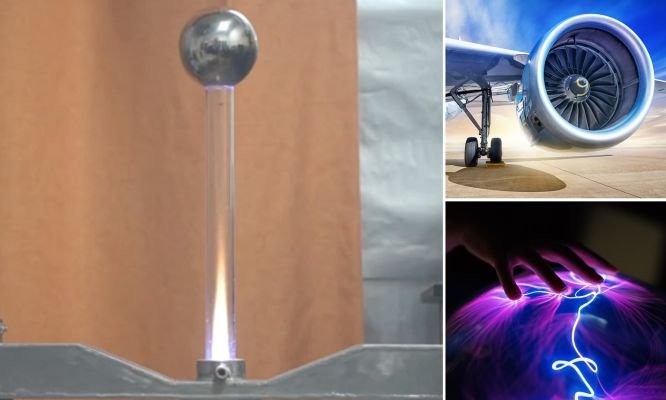A prototype jet engine can propel itself without using any fossil fuels, potentially paving the way for carbon-neutral air travel.
The device compresses air and ionizes it with microwaves, generating plasma that thrusts it forward. That means planes may someday fly using just electricity and the air around them as fuel.
Beyond solid, liquid and gas, plasma is the fourth state of matter, consisting of an aggregate of charged ions. It exists naturally in places like the sun’s surface and Earth’s lightning, but it can also be generated.
The researchers created a plasma jet by compressing air into high pressures and using a microwave to ionize the pressurized air stream.
This method differs from previous attempts to create plasma jet thrusters in one key way. Other plasma jet thrusters, like NASA’s Dawn space probe, use xenon plasma, which cannot overcome the friction in Earth’s atmosphere, and are therefore not powerful enough for use in air transportation. Instead, the authors’ plasma jet thruster generates the high-temperature, high-pressure plasma in situ using only injected air and electricity.

“The motivation of our work is to help solve the global warming problems owing to humans’ use of fossil fuel combustion engines to power machinery, such as cars and airplanes,” said author Jau Tang, a professor at Wuhan University. “There is no need for fossil fuel with our design, and therefore, there is no carbon emission to cause greenhouse effects and global warming.”
There’s a long way to go between a proof-of-concept prototype and installing an engine in a real plane.
But the prototype was able to launch a one-kilogram steel ball 24 millimeters into the air. That’s the same thrust, proportional to scale, as a conventional jet engine.
Reference- American Institute of Physics, The New York Times, Journal AIP Advances, Futurism








